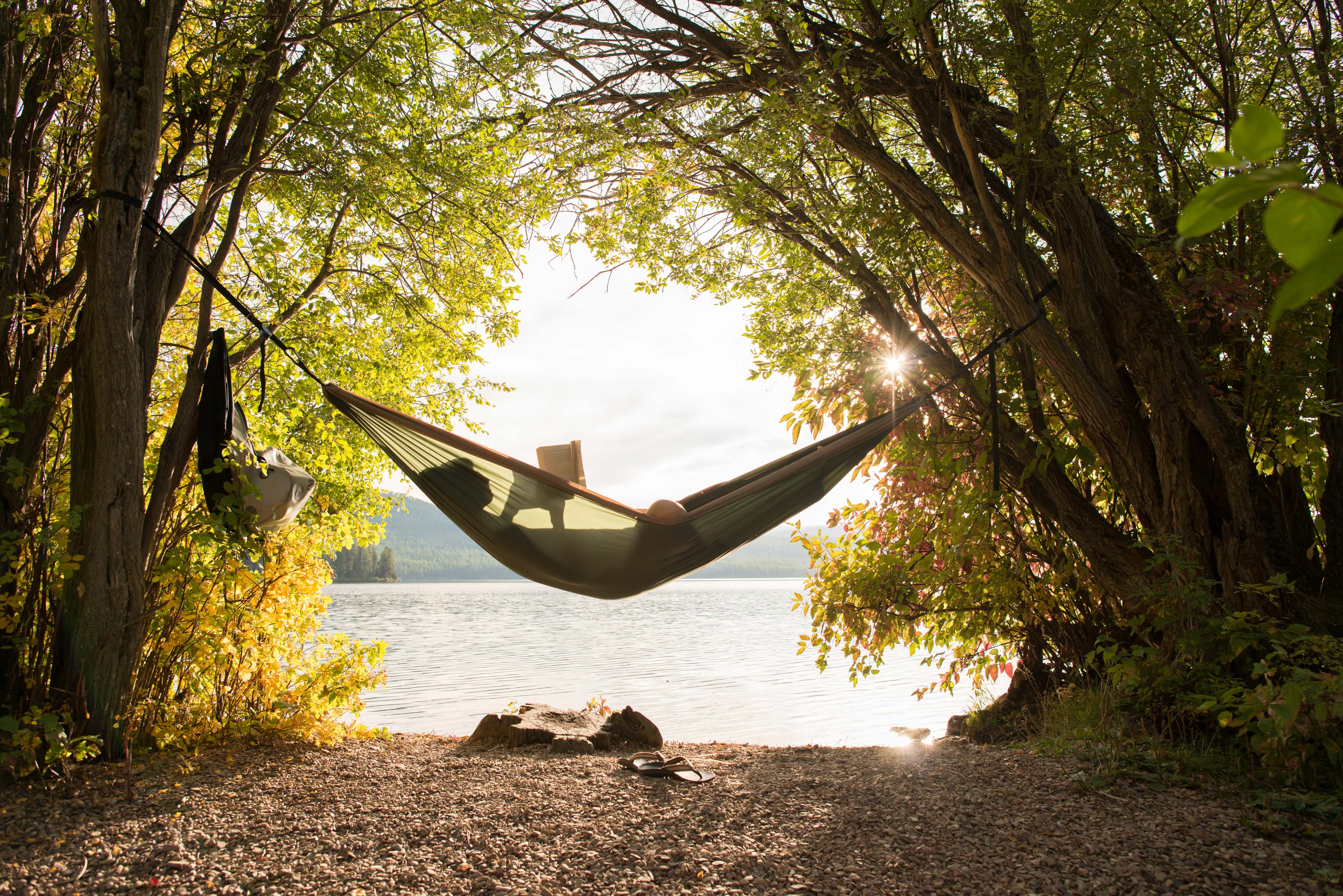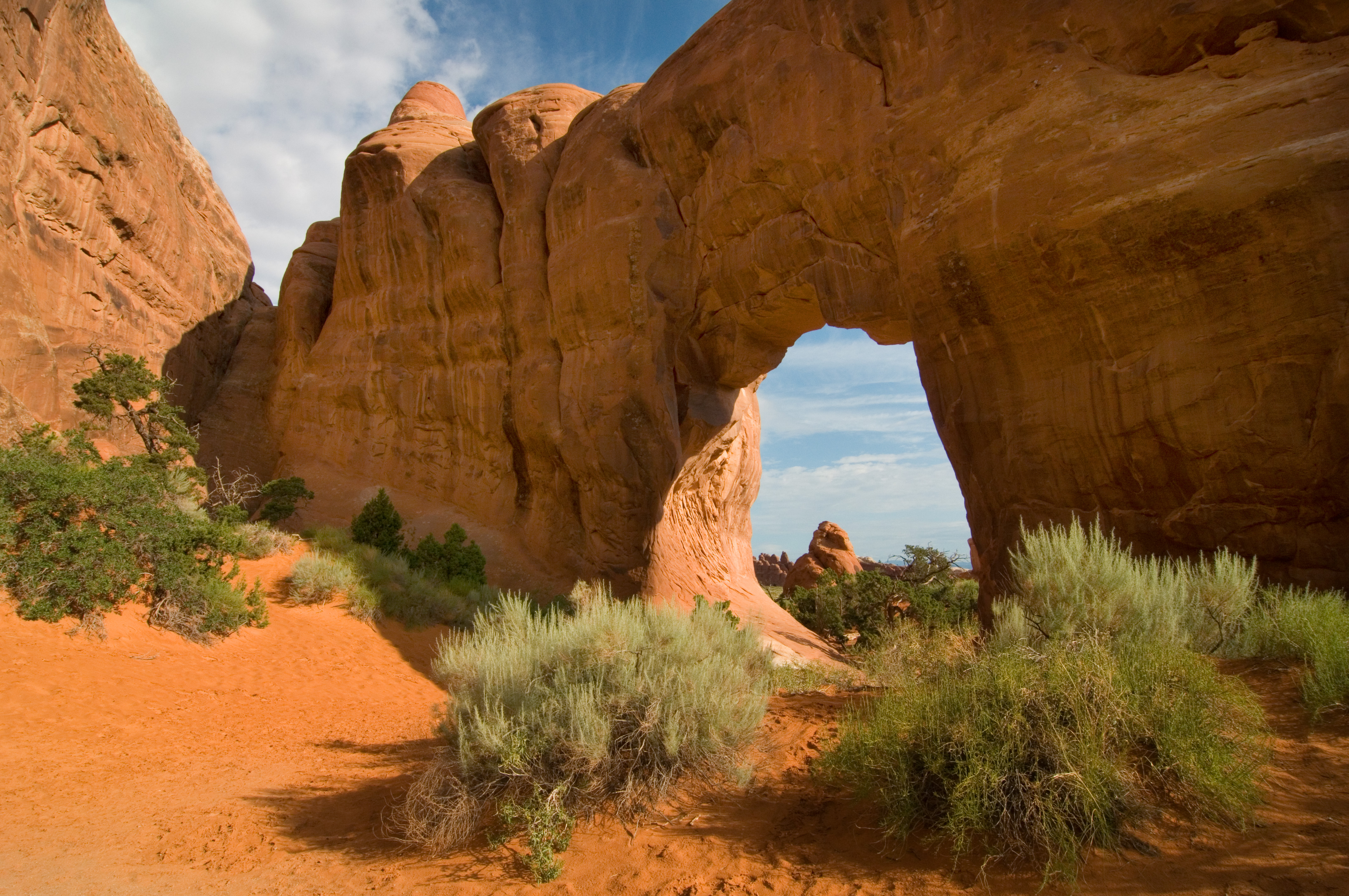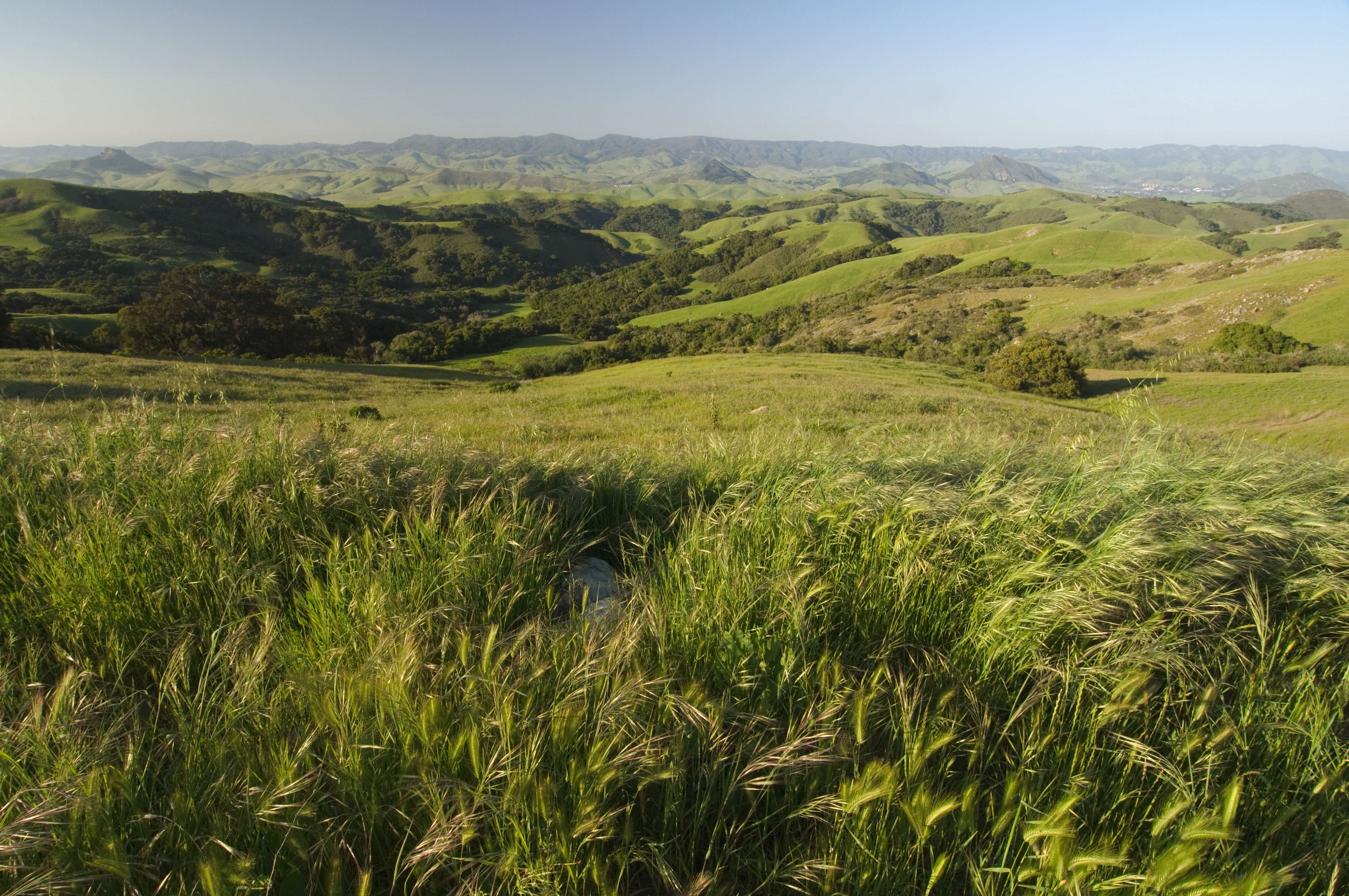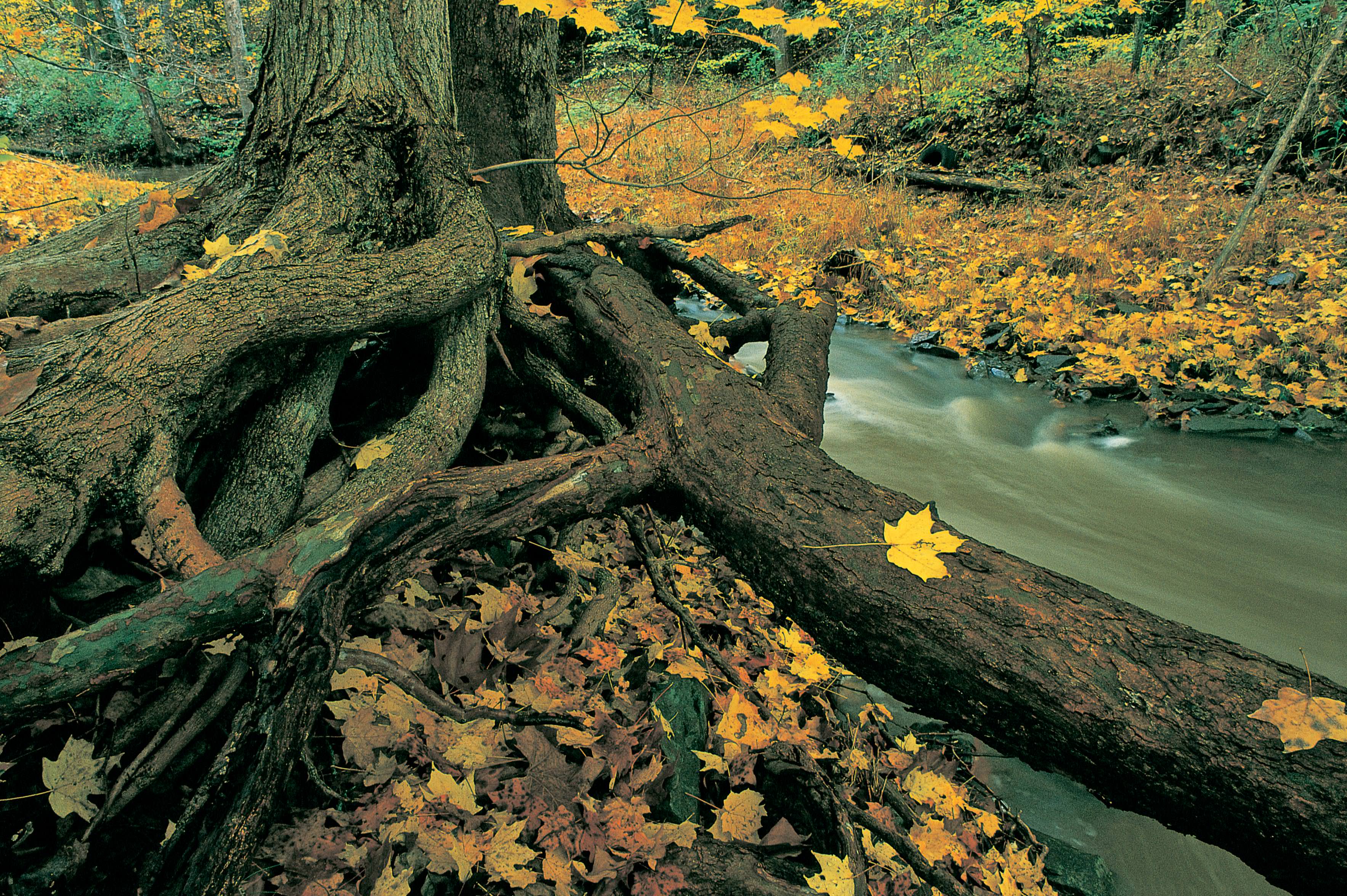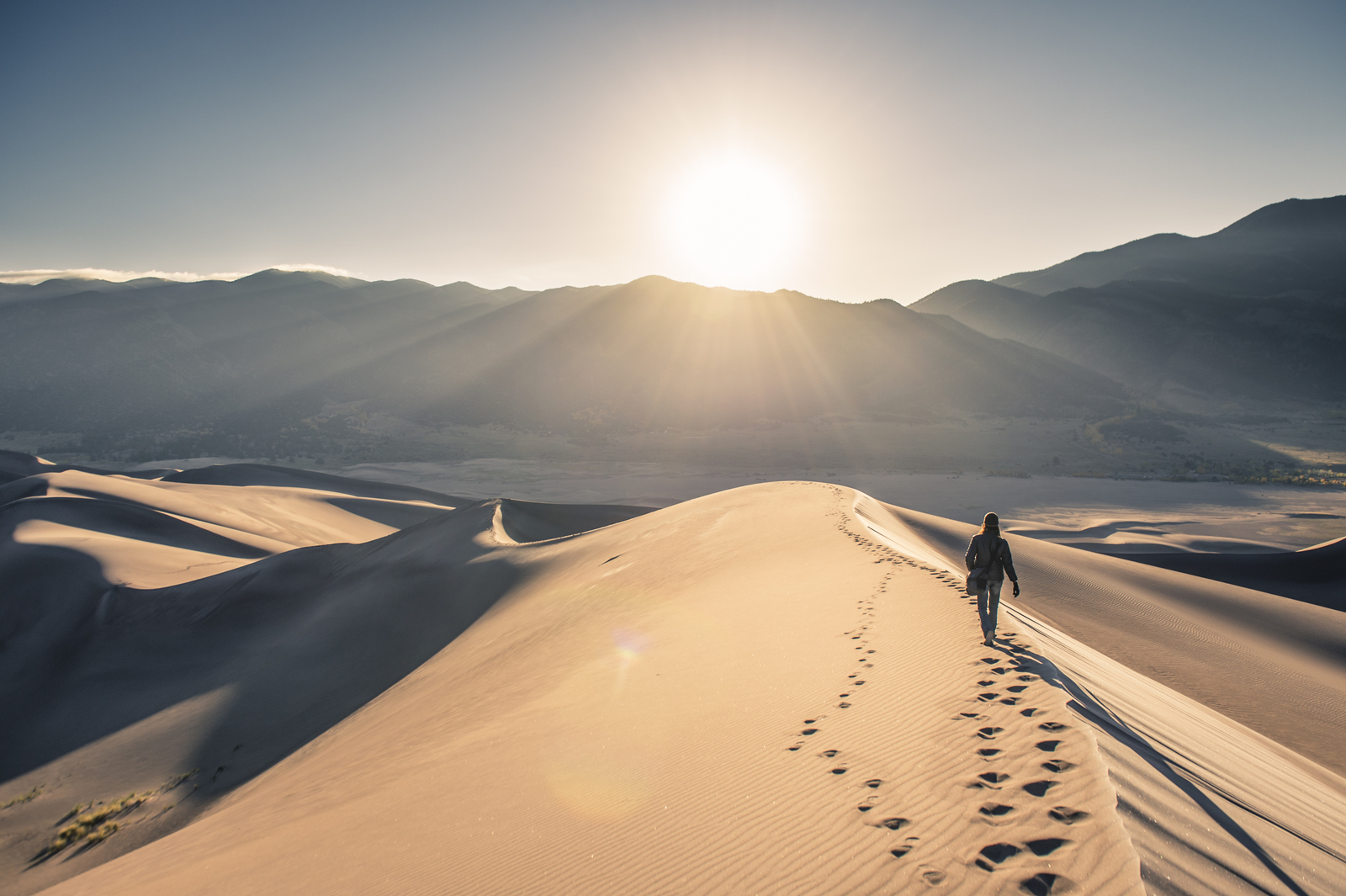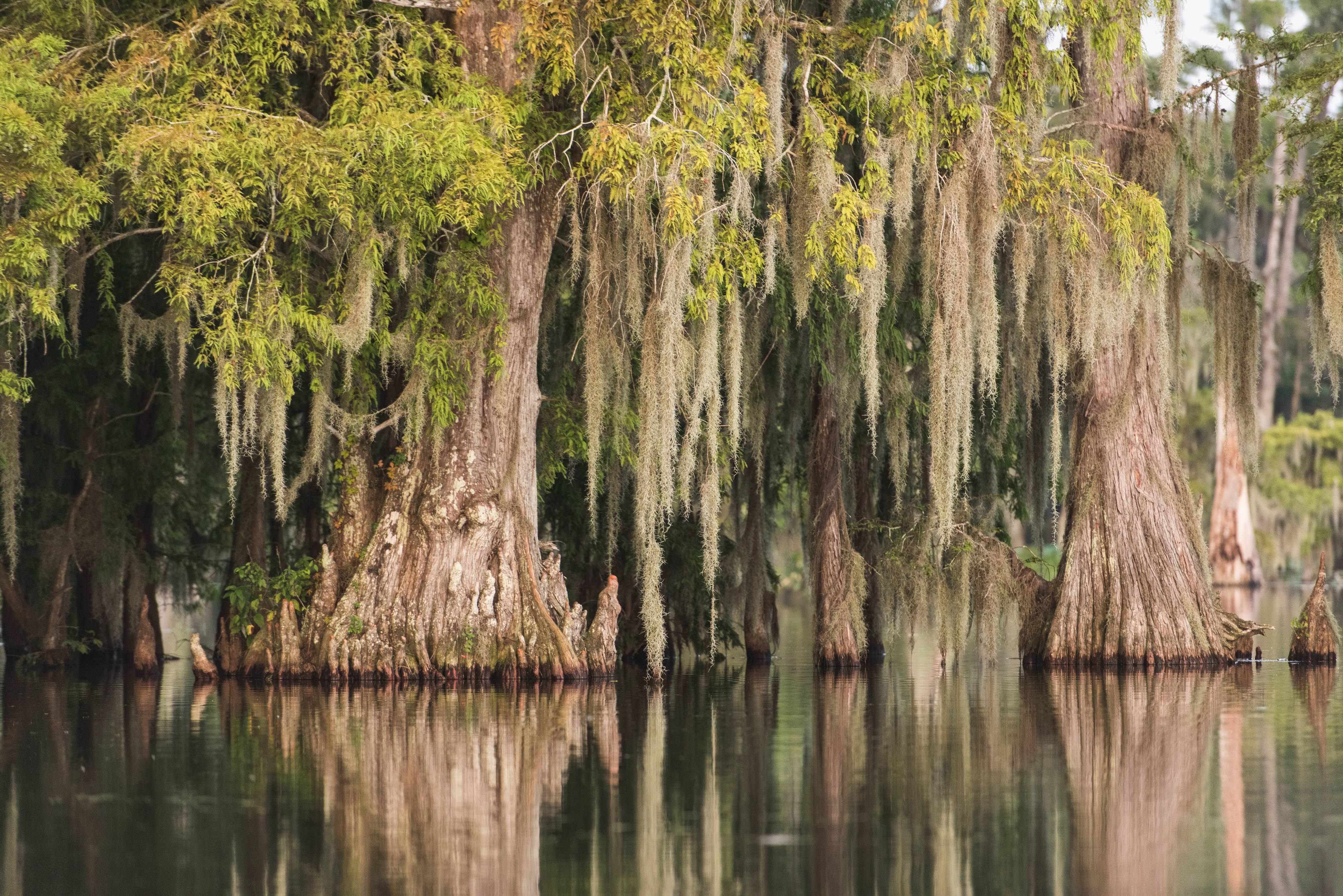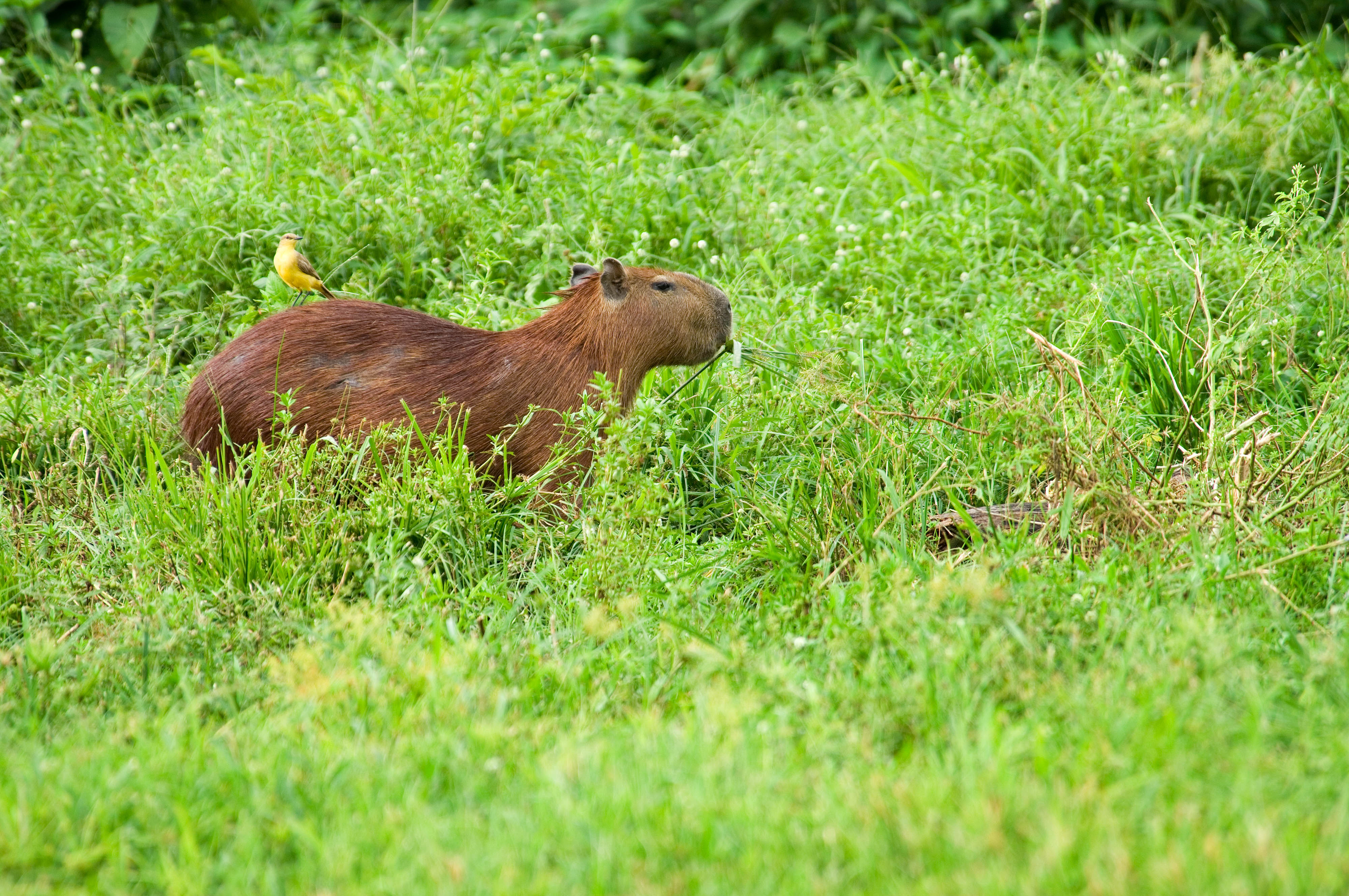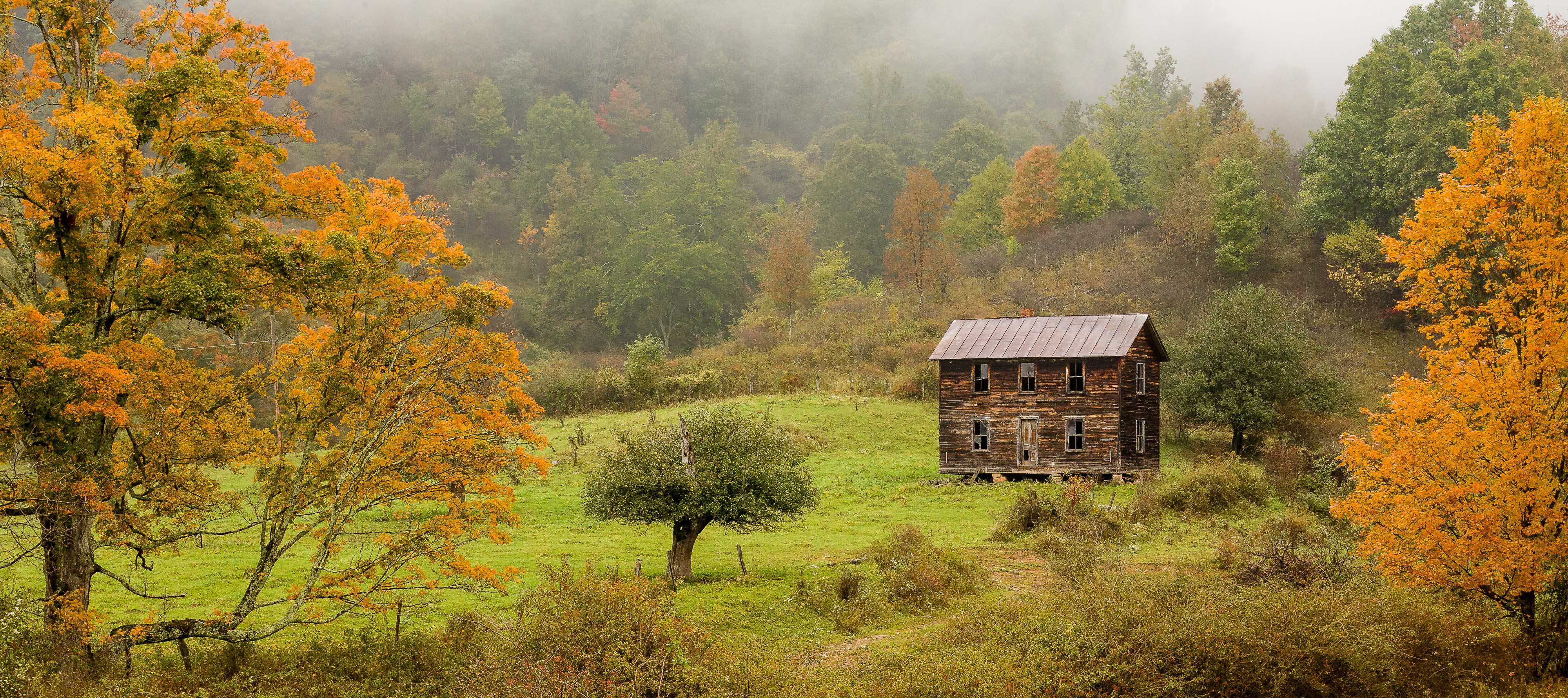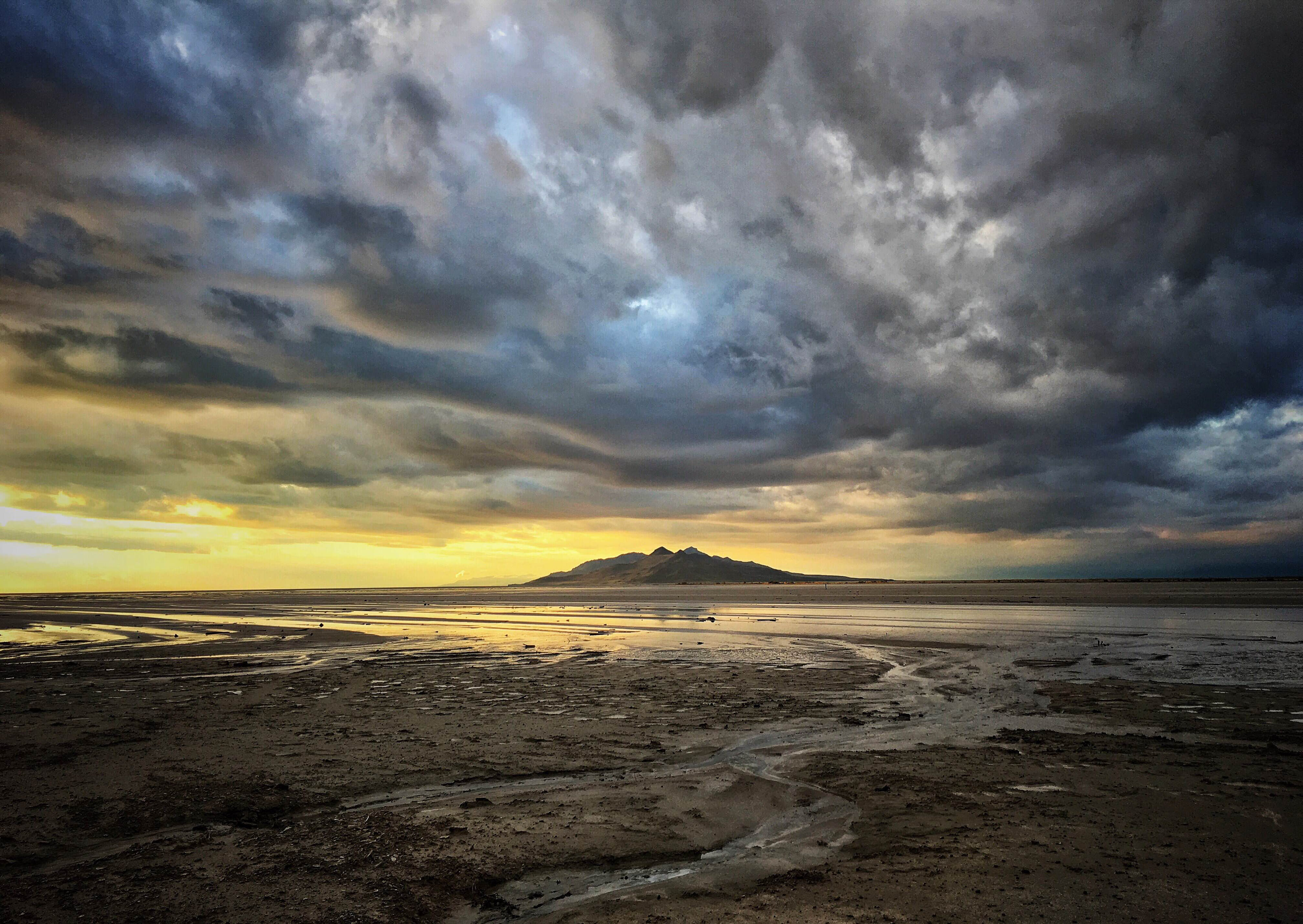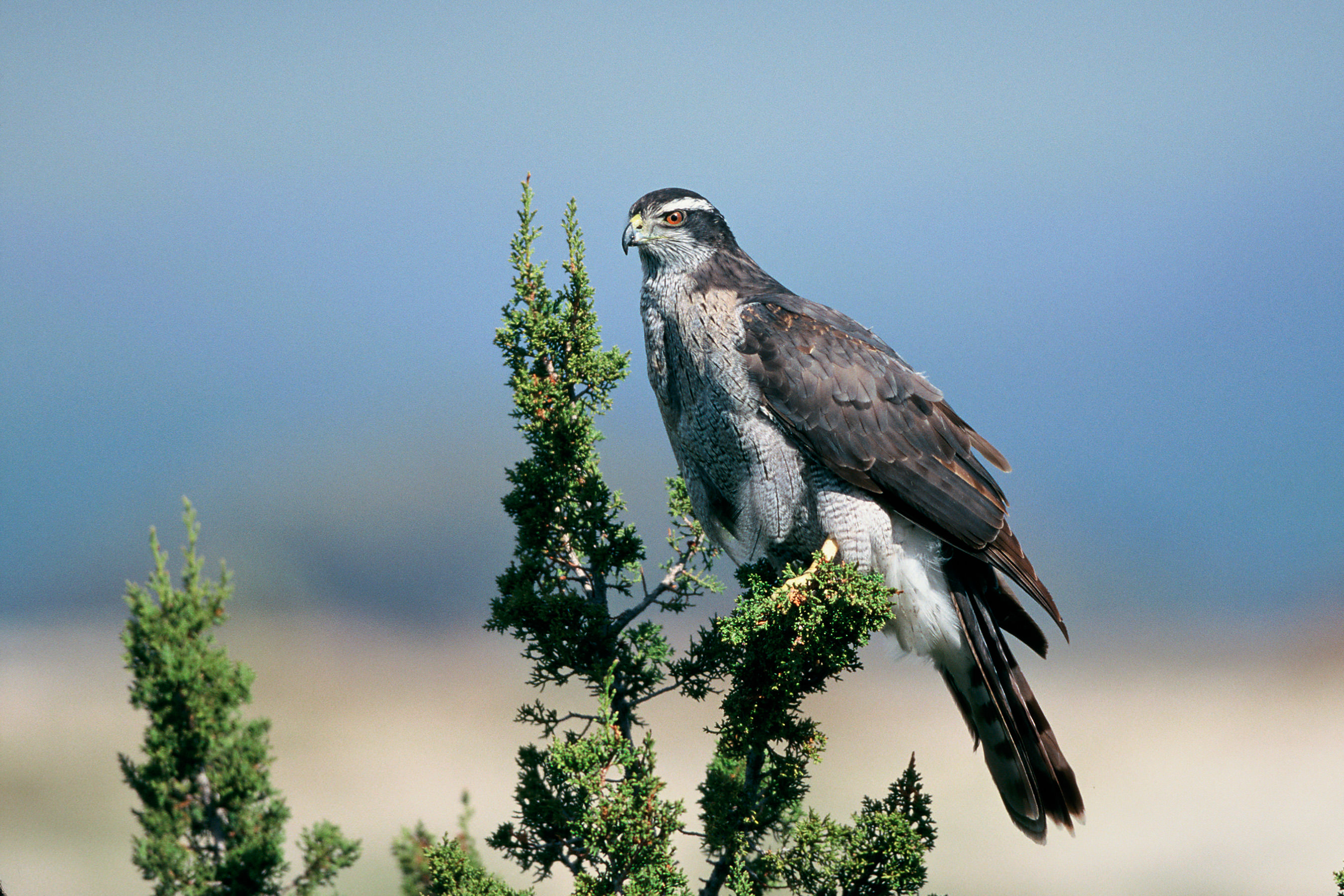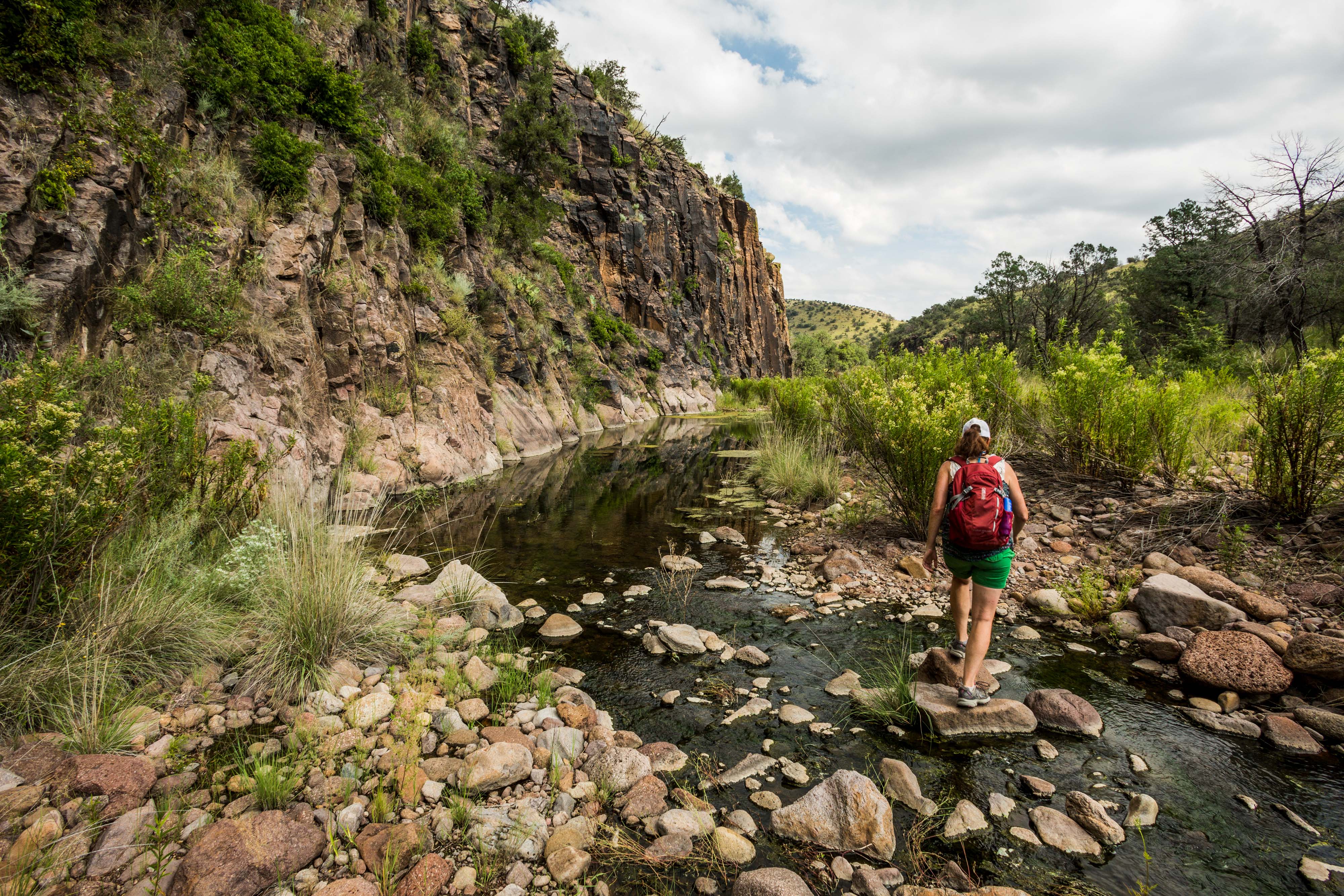Nature's Book Bag
Explore the places that call to us through the pages of a great book.
The titles in this list of staff favorites touch on the places in nature that call to us—mountains and forests, deserts and prairies, rivers, lakes and oceans. These are books that inspire and challenge, show a way forward for nature, or evoke a sense of place so strongly that the natural landscape becomes a character all its own.
The Classics
The Outermost House
Henry Beston (1928)
"As the year lengthened into autumn, the beauty and mystery of this earth and outer sea so possessed and held me that I could not go." A classic meditation on solitude in the dunes of Cape Cod, with all of nature’s rich pageant.
—Karen Schuyler
Desert Solitaire
Edward Abbey (1968)
“This is the most beautiful place on earth.”
So begins Edward Abbey’s reflections on life as a seasonal park ranger at Arches National Monument (now Park) in the 1950s. I was convinced Abbey was right by the time I’d vicariously settled into his government housetrailer near Balanced Rock, hauled a dead hiker away from Grand View Point, attempted to tame the Moon-Eyed Horse, and rafted through doomed Glen Canyon.
I remember the afternoon NPR announced Ed Abbey’s death the way some people recall JFK’s assassination. Over the next several years, I read, re-read, and taught Abbey’s books, especially Desert Solitaire. And I researched his life for my own writing projects, including an Abbey documentary that would be broadcast over those same NPR airwaves.
By happy coincidence, I did much of this work at the University of New Mexico, where Abbey had “won a degree” before heading deeper into the desert. In fact, I traced his steps all the way to Grand View Point and Balanced Rock, where a solitary raven perched near the former trailer site. I could almost feel Abbey’s spirit keeping watch over earth’s most beautiful place through that croaking bird’s imperious black eyes.
—Danny White
A Sand County Almanac
Aldo Leopold (1949)
Completely insanely gorgeous descriptions of American landscapes, some beautiful, timeless ideas about land and nature and conservation and living. For me, this book crystallized a lot of what I was thinking, and I still often think about it.
—Lyle Solla-Yates
Young Adult
The Luckiest Girl
Beverly Cleary (1958)
Sick of Oregon winters and her mom treating her like a baby, Shelley gets the chance to spend the school year with her mom’s college friend in southern California. Experiencing the differences between the Pacific Northwest and warm, rural California is a huge part of this book’s appeal, especially to young girls who aren’t from either place.
To a girl in Georgia reading this book, watching Shelley discover olive trees—and why you don’t eat the olives off the trees—was completely exotic. The scenes where her new friends deal with the frost and its effect on their groves was foreign as well, and helped me understand how agriculture works—through the hard, hard work of people.
—Kay Summers
Island of the Blue Dolphins
Scott O’Dell (1960)
Island of the Blue Dolphins was inspired by the true story Juana Maria, a Nicoleño Native Californian who lived alone for 18 years on San Nicolas Island. Karana, her fictional counterpart, learns the seasons and moods of her remote island home in order to survive years of solitude, and finds comfort and companionship in its wildlife.
Karana wasn’t much older than I was when I first read Island of the Blue Dolphins, and her ingenuity, bravery and determination made her an instant hero in my eyes.
—Whitney Hall
My Side of the Mountain
Jean Craighead George (1959)
Escaping into the wilderness has been a defining theme in American literature from Rip van Winkle to Alexander Supertramp. Jean George’s classic version introduced me to my first literary hero.
Twelve-year-old Sam Gribley flees his family’s New York City apartment and creates a new home in a hollowed-out tree in the Catskill Mountains. Sam learns to live off the land, hunts with a peregrine falcon named Frightful, and befriends a weasel (literally) that he dubs The Baron. His human visitors, though, reveal Sam’s internal conflict between his desire to live in the wilderness and his need for family and companionship.
—Danny White
Bridge to Terabithia
Katherine Paterson (1977)
"Here in the shadowy light of the stronghold everything seemed possible. Between the two of them they owned the world and no enemy ... could ever really defeat them."
Terabithia is the imaginary kingdom created by two young friends, Jess and Leslie. This small patch of woods in rural Virginia becomes a haven where their fears, frustrations and anger can gradually be overcome. When a tragedy occurs, the stillness and quiet of Terabithia's forest offers a place to heal.
—Whitney Hall
Sci-Fi and Fantasy
Dune
Frank Herbert (1965)
"He who controls the spice controls the universe."
The drug melange, or "spice", fuels the richly imagined world of Frank Herbert's Dune. It extends life and makes long distance space travel possible, and it can be found in only one place—the desert planet Arrakis.
The quest to control the planet and its spice sets in motion a sweeping conflict between Paul Muad'Dib and the Fremen, an indigenous people who have learned to live in harmony with Dune's harsh environment; Liet Kynes, a scientist and ecologist who dreams of terraforming Arrakis into a green and temperate world; and House Harkonnen, a noble family bent on exploiting the planet's resources for their own personal gain.
—Whitney Hall
Swamp Thing
Brian K. Vaughan (2001)
The natural world is the story’s superhero, embodied as the Swamp Thing, struggling with humans' disregard for both the environment and for one another. While the original Swamp Thing was written by Alan Moore (of Watchmen fame), subsequent iterations have featured talented writers such as Brian K. Vaughan (Y: The Last Man, Saga), Jeff Lemire (Sweet Tooth, Descender), and Scott Snyder (Batman, American Vampire).
—Lindsay Renick Mayer and Matt Kane
For Kids
The Wump World
Bill Peet (1981)
This children’s book was one of my sister’s favorites growing up and I just received it from her at my baby shower.
The lovely lives of these make believe capybara-like creatures are turned upside down when humans arrive on their planet and nearly destroy the Wump's only habitat. There is a happy ending—the Wumps find a new green home—but it is quite a sobering read for parents and kids alike.
—Briton Camphouse
The Little House
Virginia Lee Burton (1942)
When my children were born, I eagerly sought out several favorites remembered from my childhood to read again (and again!) with them. The Little House is near the top of the list.
Author and illustrator Virginia Lee Burton tells the story of a stout little house built atop a hill, surrounded by apple trees, and a brook with a little pond. The house watches the stars at night, the sun by day, and through the year sees the children that live in her play under the apple blossoms, swim in the brook, return to school with the falling leaves, and skate over the frozen pond. All the while, the once far away lights of the city come closer, horses give way to automobiles, and finally the little house is a forgotten little eyesore squeezed between two skyscrapers, with a subway below and an elevated train above.
It is a poignant tale of how a series of nearly imperceptible changes combine with a few big ones to radically alter the character and quality of the setting we call home. When the little house is rediscovered by the great-great-granddaughter of the man who built her, we get to experience the joy of reconnecting with a place and time once lost.
—Judy Dunscomb
When You Crave a Road Trip
Wild to the Heart
Rick Bass (1990)
Rick Bass has written better—and better-known—books. But Wild to the Heart is like that album you loved before the band blew up and became the next big thing. Sure, the stories are fun. I mean, when Rick takes off on that kamikaze road trip spanning from Mississippi to the Rocky Mountains, you’re riding shotgun in the VW Rabbit, aren’t you?
Then you stop off for a strawberry shake and you slurp it slowly, under the shade trees. And then you ride and ride. Because the language flows over and through you, cool and fresh as the mountain air blowing through your window, tangling your hair.
—Danny White
When You Want to Reflect
Refuge
Terry Tempest Williams (1991)
Beautifully rendered observations of the impacts to the Bear River Migratory Bird Refuge from historic flooding of The Great Salt Lake in 1983.
In this same year, Tempest’s mother is diagnosed with cancer, perhaps as a result of radiation to which many Utah residents were exposed during the era of nuclear bomb testing. A story of family, land, change, loss and grace.
—Judy Dunscomb
H is for Hawk
Helen Macdonald (2015)
Following the loss of her father, writer Helen Macdonald’s grief led her back to a passion for falconry and a goshawk named Mabel, as she recounts in this wonderfully written memoir.
Macdonald simultaneously tells the story of author T.H. White’s efforts to tame a goshawk, weaving together two very different accounts of individuals turning to nature to process pain and retreat from society.
As Macdonald and White’s sadness and isolation lead them to start seeing the world through the eyes of their hawks as much as their own, the story becomes an unpredictable meditation on nature itself; flitting between beauty, brutality and poetry as quickly as Mabel cuts corners in the air to capture her prey.
—Matt Kane
Olive Kitteridge
Elizabeth Strout (2008)
Olive Kitteridge is a novel made up of related short stories about a retired high school math teacher slow to adapt to change and grappling with her own mortality. The 13 stories weave together the shared tale of the residents of the town of Crosby, Maine, which itself becomes an additional character.
Even years after reading the book, I can vividly recall the scenes set against the beautiful backdrop of coastal Maine: the crashing waves, the steep cliffs, the salty air. It is a poignant and sad story, one that forces the reader to reflect while yearning to do so in the kind of peaceful setting so vividly captured in the book.
—Lindsay Renick Mayer
Stay In Touch
Sign up to receive monthly conservation news and updates from Virginia. Get a preview of Virginia's Nature News email

